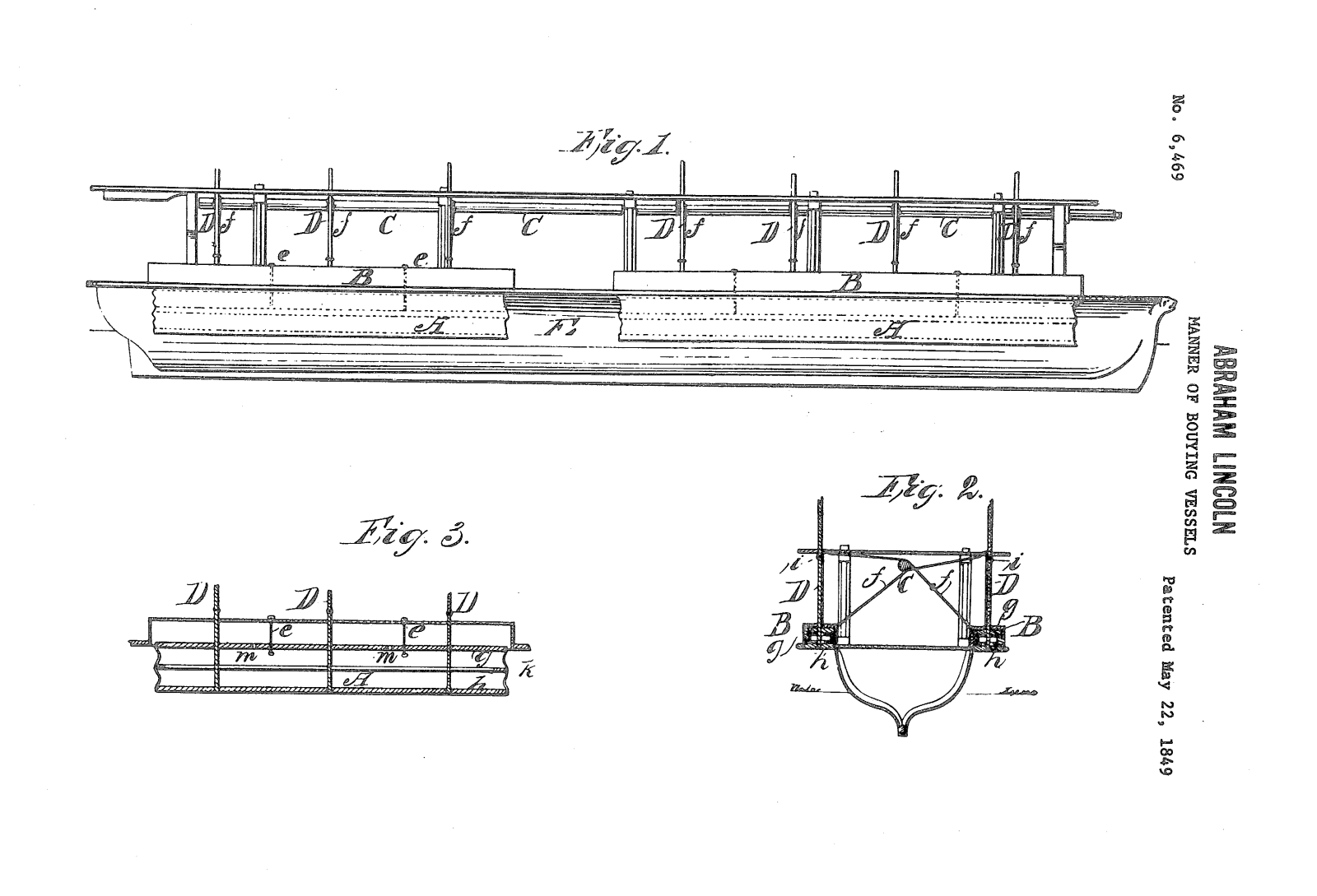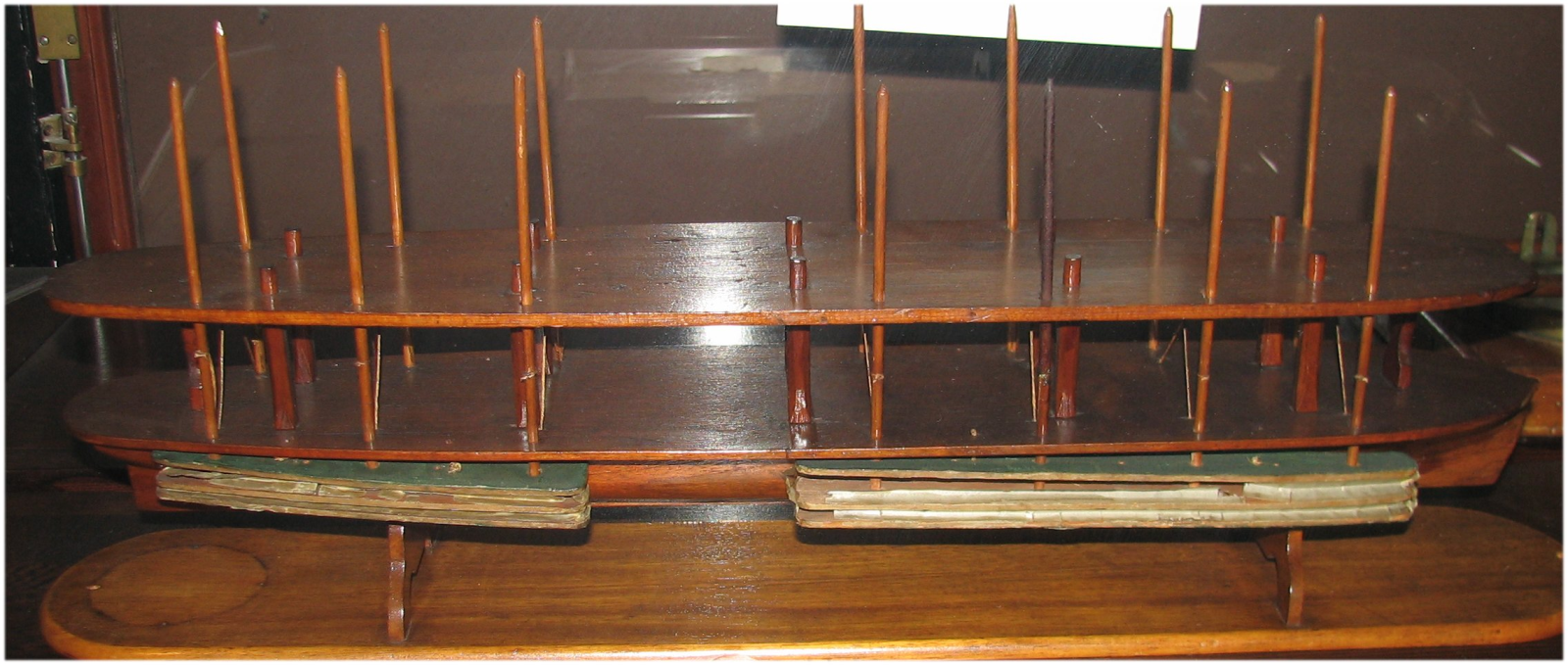Abe Lincoln, Inventor
by Roger Kaza
Today, Abe Lincoln, inventor. The University of Houston presents this program about the machines that make our civilization run, and the people whose ingenuity created them.
Some homespun advice from an icon, posted on Facebook: "Don't believe everything you read on the Internet"--Abraham Lincoln. Well now that your skepticism is on high alert, you may doubt my claim that, even if he didn't predict the internet, Abe Lincoln was indeed an inventor. Not only that, a patented inventor, the only U.S. president so distinguished. His patent, No. 6469, you can easily look up on google--or in a reputable book if you're heeding his latest words of wisdom.
Lincoln's patent is cryptically entitled Buoying Vessels Over Shoals, which sounds more like a job description than an invention. It came about from his long experience with riverboats on the Mississippi and Great Lakes. These boats could hold a lot of cargo, but they had an unfortunate tendency to get stuck on sandbars, gravel bars, well, shoals. And when a boat did, there wasn't much else to do except completely unload it and hope that that would be enough to set it afloat...obviously a cumbersome and time-consuming task. Lincoln's brilliant idea was to give the boat more buoyancy and a higher draft, but only when needed. He did this using inflatable chambers or bellows...pontoons we would now call them, fixed to both sides of the hull. These chambers, made of "India rubber cloth or other suitable waterproof material," according to the patent, would remain deflated during normal use. But if a boat became stuck, they could be blown up on the spot to theoretically lift the entire vessel up and off the obstacle.

Lincoln's patent diagram
Photo Credit: Google Patents.
Lincoln, at this point in his career, 1849, was returning to his law practice in Springfield, Illinois. He'd just served a term in the U.S. congress and was taking a break from politics. His law partner, William Herndon, observed that Lincoln, and I quote, "evinced a decided bent toward machinery or mechanical appliances, a trait he doubtless inherited from his father who was himself something of a mechanic." Lincoln practiced patent law and was a huge fan of it, saying that patents "added the fuel of interest to the fire of genius in the discovery and production of new and useful things." He was so excited about his idea that he created a two-foot wooden scale model, a replica of which you can find today in the Smithsonian. Herndon recalls Lincoln bringing the model to work and whittling away at it, while expounding on its many virtues. Sounds like every other mad inventor, right?

Replica of Lincoln's scale model of boat. Pontoons are in the foreground, deflated.
Photo Credit: David and Jessie - Flickr.
And here's where the story takes an odd turn. Lincoln's boat was never constructed, and as far as we know, never even tested. We can't say if his concept would work or not. He seems to have lost interest in the idea. Or maybe he sensed that his own "fire of genius" lay somewhere else. Yes, a few riverboats might still get beached on sandbars. But the enormous ship we dared to call The Union was speeding full sail towards catastrophe, and Abe Lincoln would soon become its captain.
I'm Roger Kaza, from the University of Houston, where we're interested in the way inventive minds work.
Thanks to inflatable riverboat historian Herm Hoops for forwarding to me a Smithsonian magazine article by Owen Edwards which inspired this episode.
Lincoln's patent: https://patents.google.com/patent/US6469A/en?inventor=Lincoln+Abraham
Wikipedia article on Lincoln's patent: https://en.wikipedia.org/wiki/Abraham_Lincoln%27s_patent
Previous Engines episode about patents: Episode No. 418.
O Captain, My Captain! https://www.poetryfoundation.org/poems/45474/o-captain-my-captain
This episode was first aired on February 11, 2020

Internet meme
Photo Credit: Know Your Meme.